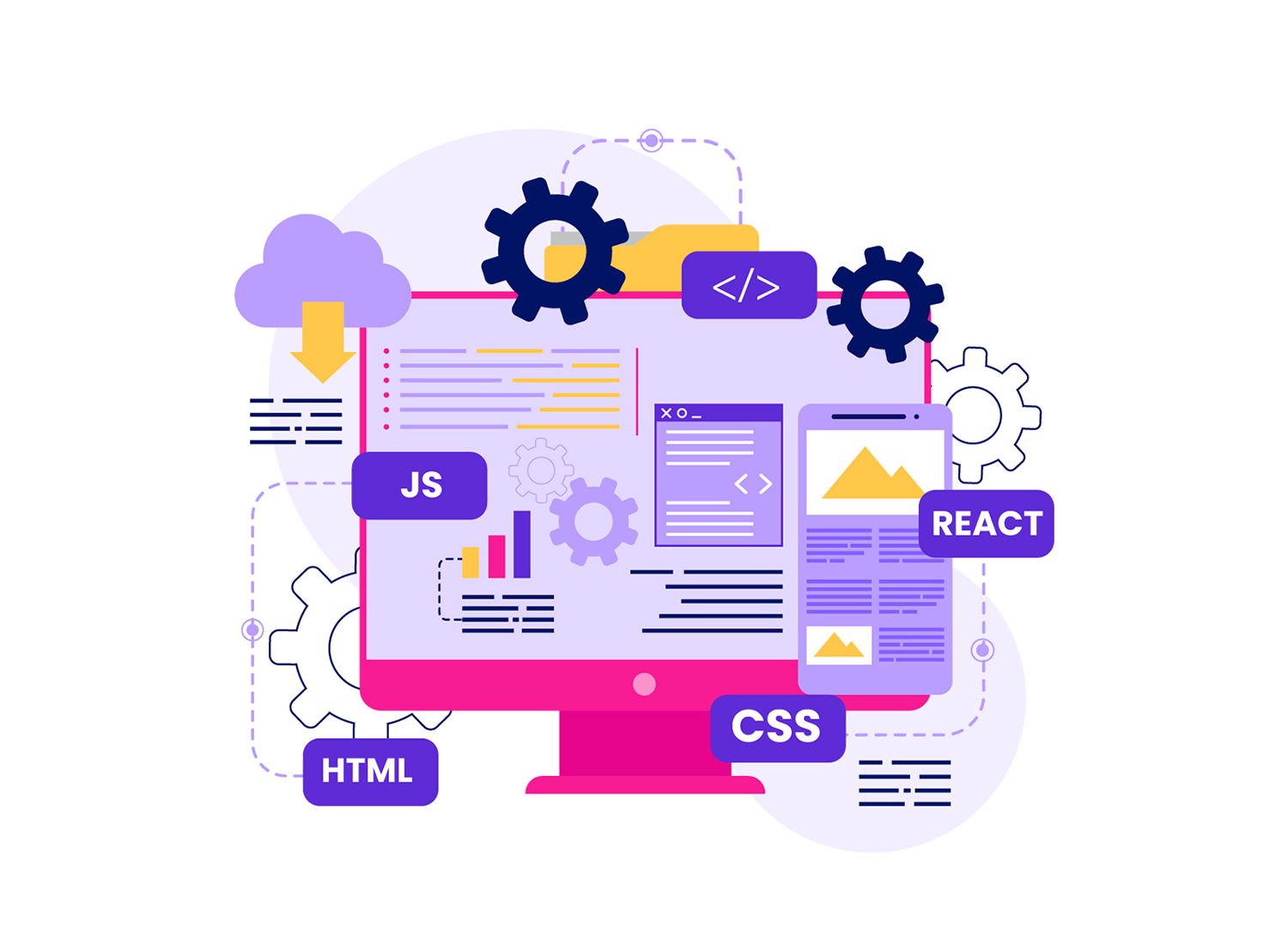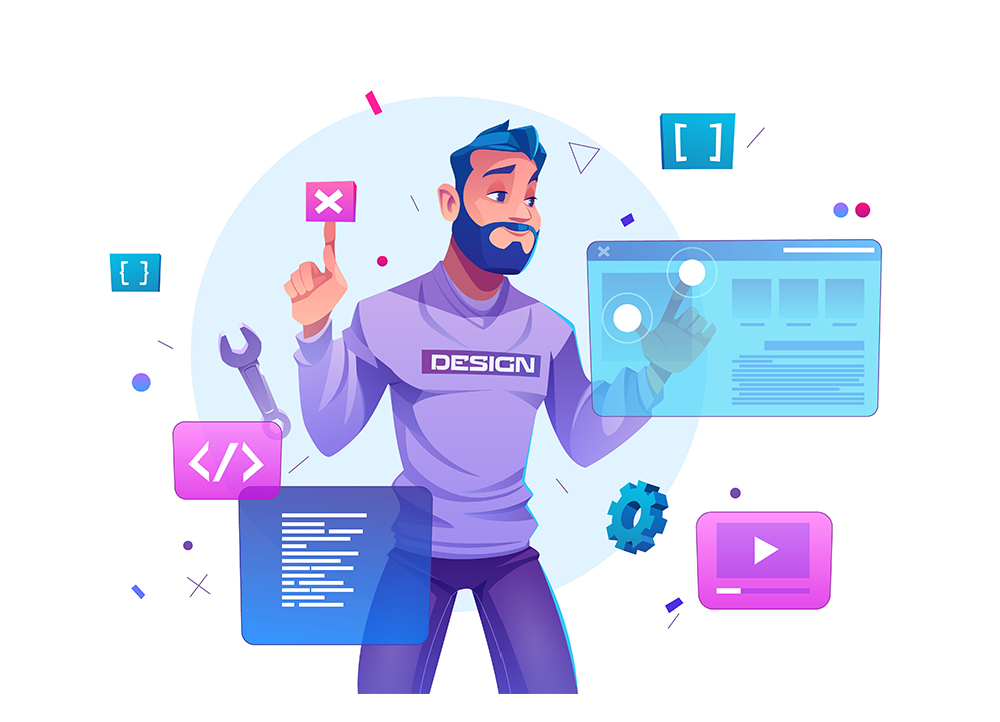Custom Software Development in 2023: The Complete Guide

Businesses nowadays have exponentially improved mobility, automation, and adaptability — thanks to technology. It isn’t astonishing to see how heavily business owners of this era rely on technology, as it supports business growth.
Large businesses have always reaped the benefits of technology, but in the past few decades there has been a paradigm shift, and even small businesses have fallen in line with this trend.
According to a recent study, 93% of small businesses in the United States have integrated technology, and the vast majority of them are optimistic about the prospects of using technology.
Technology is a need of the time; the question follows whether packaged software that comes ready for use with a subscription or an initial purchase is the right choice for you or whether you should opt for personalized custom software.
Custom-Tailored Software vs. Off-the-Shelf Software Products
Packaged (off-the-shelf) software aims to provide ease of use and access, rich functionality, and wide availability. It lacks the uniquely tailored features and functions that accompany custom software. Unlike its off-the-shelf counterpart, custom software is like a tailored suit—made to address your business model and requirements.
Businesses often encounter challenging problems of varying complexity. They look for bespoke solutions because most off-the-shelf software cannot cater to these complicated tasks.
More precisely, developing custom software is more of a need than a luxury in this digital age. It enables your company to offer a distinctive experience that gives you an edge over your competition.
However, custom software development is not an easy task. It requires strenuous effort and time even with the necessary technical knowledge and know-how. To create high-quality software, you can either use the services of a competent software developer, a freelancer perhaps? You can also work with a seasoned custom software development company — like Genesis Engineering.
If you are convinced that your business needs automation but aren’t sure how to implement custom software, then we will guide you through all the stages involved in software management. We will also discuss the benefits that come with the inclusion of technology in your business.
What is Custom Software Development?
Custom software addresses specific business-related challenges of a user, group or organization, keeping the management, branding, implementation requirements, and business operations of the organization into consideration.
Unlike packaged off-the-shelf software made for a broader commercial audience and aimed at providing globally effective and handy services, custom software targets your specific needs and requirements, improving your workflow, overall productivity, and performance.
Adobe applications, such as Illustrator, cater to creative artists and are commercial off-the-shelf software (COTS) solutions equipped with a broad set of tools that meet very generalized needs. In contrast, airlines employ technologies that make booking convenient for travelers, and banking apps and portals used by private banks allow their users to access banking services remotely.
Both are custom software oriented to perform specific tasks efficiently.
If your team does not have the technical expertise to build custom software, you may look up software development freelance services or work with a development firm. However, hiring a committed and knowledgeable staff from custom software development companies costs much less than building your team.
The US software market is a great place to look if you’re looking for a firm to build solid software products to scale your business. Many experienced software development companies in the USA provide solutions to develop a product that matches your objectives, allowing you to become more competitive, offer the necessary security, boost productivity, and guarantee your future growth.
You can also look for nearshore software development companies and save big bucks!
The process of custom software development follows almost all the same stages as other forms of software development. The familiar steps any custom project would move through are:
- Requirement Analysis
- Feasibility Study
- Design
- Coding
- Testing
- Installation/Deployment
- Maintenance
Post-deployment maintenance and updates are necessary to ensure that a company’s proprietary software will continue to be functional and satisfy changing customer and market expectations, and they aim to improve the software’s effectiveness.
Is Custom Software Development Suitable for You?
Albeit the benefits of custom software, developing one is very costly and time-consuming. Before involving your business in this strenuous process you need to be mindful of these indicators to be sure that custom software development is indeed the right way ahead for you.
Signs in Your Business
If your staff members need to conduct several workarounds or deal with a lot of paperwork each day, a custom software solution should be the way to go. These inefficiencies decrease productivity and affect your profitability. Here are a few warning signs that your existing method is ineffective.
- Excessive paperwork, inefficiency, and the number of steps required to do routine activities indicate that you need to make adjustments. Technology is designed to make laborious procedures and jobs more efficient, not the other way around.
- If your staff needs to use several workarounds to do their tasks because of the commercial software you are utilizing, that’s a no-no. For instance, the software you’re using takes data entry in a specific format, and your staff has to manually manipulate each data entry before exporting it to the commercial software. Developing bespoke software could sort out such problems.
- If your current method of collecting data and keeping records of your books and business and consumer statistics is unorganized and does not generate reports and metrics promptly, you need an alternative. An indicator informing you of your progress is necessary; if you don’t have one, custom software will help you.
- If you work in an emerging industry or have an original product or service, a commercial product might not yet be ready to serve you. If your business employs policies that project rapid acceleration and expansion, you need software that can keep up with your immediate needs, and custom software will suit your application.
Analyzing Build vs. Buy
It is an effective strategy that compares the pros and cons of acquiring pre-built software vs building one from scratch to determine which of the two is the right option for you. Here are some common parameters used in build vs buy analysis to help you make a better judgment.
Cost
The cost associated with the development, design, testing, and maintenance of each of the two kinds of software is a crucial factor. You can acquire commercial solutions after subscribing to their licensing agreements with relatively insignificant costs in comparison to the cost incurred when designing and planning a new solution from scratch.
Time and Resources
The time taken in the deployment of a custom vs a prebuilt solution is of crucial importance. If you require software to add functionality and value to your process quickly, you should consider having it custom-built. But if you are looking for a long-term solution to fit your specific needs and have alternatives in place while it is under development, then custom software is the right choice for you. Bear in mind that even a dedicated and professional team of developers may take up to a year on average to deliver new software.
Maintenance
Software created in-house throws the whole burden of maintenance and upkeep on your shoulders, requiring more time and resources and driving up expenses. When you consider the many platforms and operating systems, maintaining an up-to-date software solution soon turns into a liability that you must address.
Benefits of Integrating Custom Software
Is a tailored suit the right choice for you? Well, being aware of the resources available to you can help you make better decisions. But custom software offers much more than just a tailored experience. It comes packed with benefits that outweigh the downside in the long run. We have prepared a list of some of these benefits, which may help you make a better decision.
Boosted Productivity
Custom software tailored to your needs and requirements improves workflow and boosts productivity by selectively focusing on the functions and modules needed for your particular setup. Instead of a broad jargon of tools that your process must adapt to, it’s a set of tools adapted to your needs that makes processes, tasks, and workflows increasingly efficient.
Enhanced Profitability
Not only does custom software increase profitability indirectly by improving efficiency in your process, but it can also become a source of revenue for you. You can license or sell your custom software to businesses and firms with similar needs as yours and earn money based on the terms of your agreement with the other party.
Better Security
Custom software is tailored to fit your needs; if your particular arrangement demands increased security parameters to protect the sensitive data of your customer or firm, the feature can easily be added, unlike with boxed-on-shelf software, where you would have had to rely on third parties for securing your data.
More Authority
You no longer have to deal with price hikes in getting licenses for your packaged software; you don’t have to agree to any pesky terms and conditions for using packaged software from third parties, and lag and crashes because of failure on the software vendor’s end would no longer affect your business.
Effortless Adaptability
If your business explores new areas and expands, requiring new and more advanced tools for operations, you don’t have to switch your software. When using custom software, your existing software can be expanded and remodeled accordingly. Had you been based on a third-party packaged app, you would incur additional charges to subscribe to their improved packages and licenses. With custom software, this is no longer a problem for you.
Effective Strategies for Custom Software Development
Understand the Development Process and Stages
The process involved in developing custom software follows the same methodology used for ensuring effectiveness and productivity in the development of all kinds of software. The Software Development Life Cycle (SDLC) is a process that seeks to provide software of a high standard that meets customer expectations. SDLC follows these steps to ensure that the process of development is smooth and efficient.
Step 1: Requirement Analysis
Requirement analysis is a technique used by developers to figure out what users anticipate from newly built software. These include identifying the needs to be satisfied, accounting for the potentially competing requirements, and evaluating, documenting, validating, and maintaining the requirements for the required software.
Step 2: Feasibility Study
The purpose of a feasibility study is to evaluate a system’s practicality, considering the user needs, resource efficiency, and cost-effectiveness. A feasibility test is a part of this step aimed at assessing the viability of the proposal. This test enables us to assess the practicality and viability of the proposed software solution judged against the required needs and requirements of the software.
Step 3: Design and Development
While creating a design, developers aim to create an outline that describes how the software will meet the users’ technological requirements. The design is essentially a description of all the decisions about the software. The development of the software starts and the design is translated into code in a specific programming language.
Step 4: Testing and deployment
On completion of the development, the software is launched in a testing environment to test its functionality, find room for improvements, and locate any bugs. In this stage, the entire system is rigorously tested and made to exactly fit the user’s requirements. Once developers have ensured that the software is bug-free, it is deployed and made functional in a live environment.
Step 5: Maintenance
It might seem like the end of the software development cycle, but it is the beginning of the evolution of software and is performed constantly to ensure the proper functionality of your software. It involves fixing any reported bugs, upgrading software to ensure its compatibility with other new software, and enhancing it to add new features.
SDLC is a standard procedure employed in the software development industry, but many different methodologies have popped up in recent years that differ in the order of implementation of the SDLC stages. Agile, waterfall, spiral, v-shape, and dev-ops are some examples of such methodologies. It is essential to communicate with your developer and discuss the specific methodologies he is employing for your project to stay updated and informed on the progress of the software’s development.
Outline Your Needs and Expectations
Now that you understand the development process, it is critical to plan and define your current standard operating procedures, your expectations from the custom software, and a metric to measure your success.
Considering the following aspects may be helpful:
- Pick out processes that need technological assistance. Make a list of all the processes involved in your daily tasks. Ask your employees, vendors, and any partners you work with; the more details you accumulate at this stage, the better. Once you have a list, you can pick out any that need to be incorporated into your software.
- List out the current hindrances in your operating procedures and what your pain points are. This will enable you to figure out the main problems you intend to address with your software.
- Sketch out how a utopia would look in terms of workflow, management, and task handling in this software. This workflow structure can become a part of your software.
Once you’ve identified your pain points, you must communicate them in great detail to the custom software freelance developer or custom software development company you’ve hired. Communication is key when it comes to getting your desired product into development.
Who is the Best Candidate for the Job?
You must be acquainted with all aspects of getting custom software developed, but the question that remains unanswered is how to choose the right firm or freelancer for the job. Whether you should go with a freelancer or hire the services of professional firms depends on the scale of the project you are aiming for and the budget you can allocate for it.
Large firms usually come with hefty contracts, whereas you can find a freelance service for about as tight a budget as you can have. In either case, we have listed some general factors that can help you choose the right candidate for you.
- Identify potential software development firms. Upwork and Fiverr are renowned platforms you can search on. Google can be equally helpful in looking for software development companies. See how well-designed their website is; do they appear to be professionals? How does the interface work?
- Choose the ones that provide the best packages for your needs and budget and begin contacting them. Judge their responses to see how approachable they are and how promptly they respond.
- Check to see whether they take into account things like software or data loss. As sensitive data, such as intellectual property and user data, is used in software development, make sure the organization is taking security precautions. Examine whether the company provides after-services such as backup, support, and maintenance.
Remember that Software development companies based in the USA are renowned for their standards, and because it is a booming market, they offer competitive rates.
Conclusion
All in all, despite the hysteria around ChatGPT, it is safe to argue that the technology holds promise, and fears of it replacing the working class are relatively low. If anything, many experts predict to make it a catalyst for more jobs.
In this guide, we’ve dived into the new wave of innovation. That brings us to the end of this guide. Thank you for reading.




